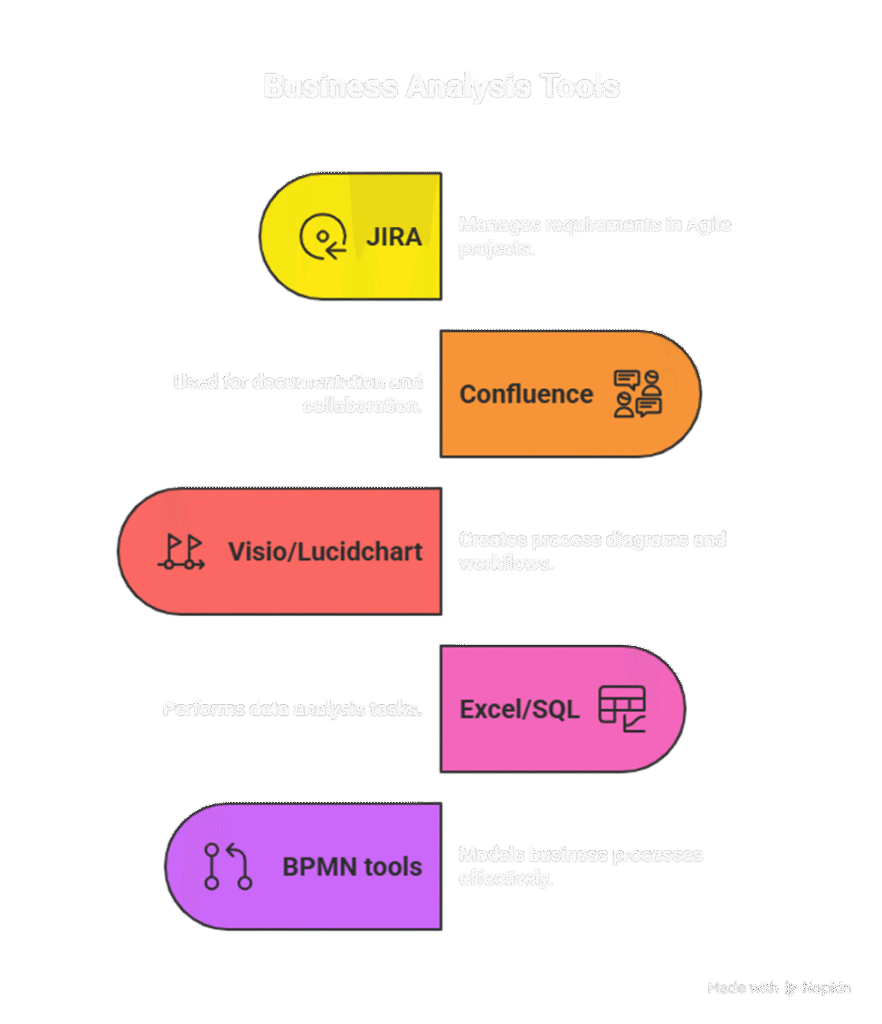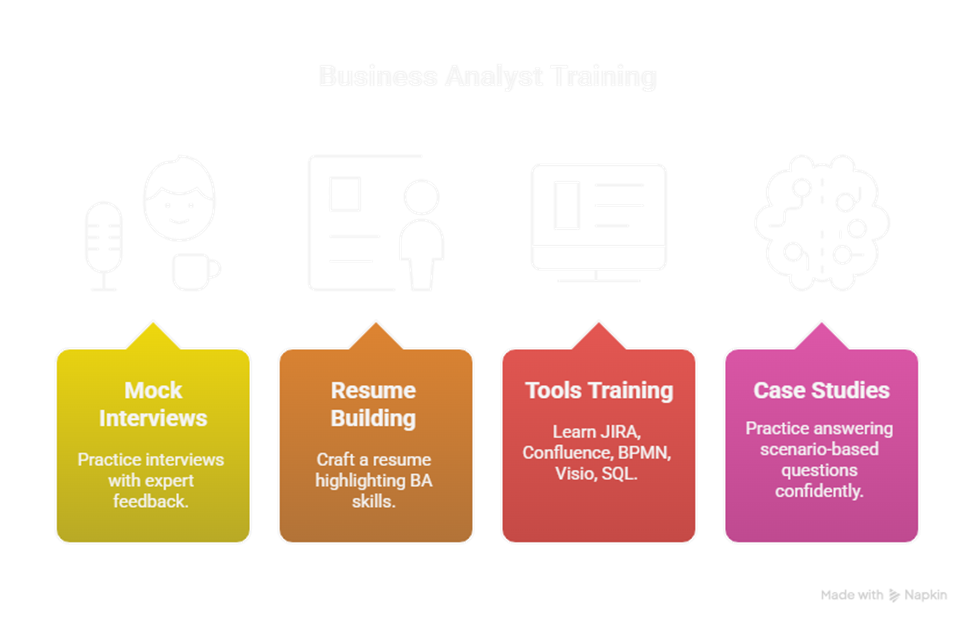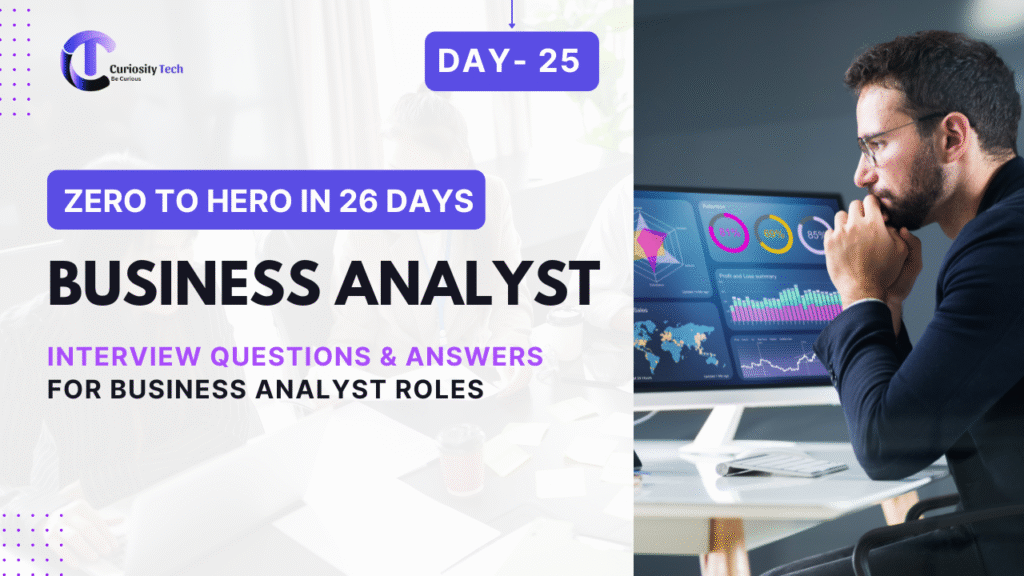Introduction
Interviews for Business Analyst (BA) roles are not just about testing your technical skills; they are about assessing your ability to analyze, communicate, and solve problems effectively.
Organizations hiring Business Analysts look for candidates who can translate business needs into actionable solutions while balancing stakeholder expectations and technical realities. Over my 20+ years of mentoring aspiring professionals and guiding projects across industries, I’ve observed that interviews for BAs are often layered—they test:
- Analytical skills (Can you break down a problem logically?)
- Communication skills (Can you deal with diverse stakeholders?)
- Business knowledge (Do you understand organizational goals?
- Tool proficiency (Are you confident with JIRA, Confluence, Visio, SQL, Excel?)

At CuriosityTech.in, based in Nagpur, we prepare learners for these very challenges. Whether it’s mock interview sessions, real-world case studies, or deep dives into tools, we ensure that you walk into an interview confident and leave with an offer.
Types of Business Analyst Interview Questions
Business Analyst interview questions can be grouped into categories:
- General Questions – About yourself, your career journey, and your understanding of the role.
- Behavioral Questions – How you handled specific real-world situations.
- Technical Questions – Tools, techniques, methodologies.
- Scenario-Based Questions – Hypothetical project or problem situations.
- Domain-Specific Questions – Focused on the industry (banking, IT, healthcare, retail, etc.).
Common Interview Questions & Suggested Answers
Below is a comprehensive set of questions with sample structured answers you can adapt.
1. Can you describe the role of a Business Analyst in a project?
Answer:
A Business Analyst acts as a bridge between stakeholders and the technical team. My role is to gather business requirements, analyze them, and document them in a way that developers and testers can use. I ensure alignment between business goals and technical solutions, manage stakeholder expectations, and support change management.
At CuriosityTech, while working on projects, we emphasize not just requirement gathering but also continuous validation, because a BA’s job doesn’t end at documentation—it extends until the business outcome is achieved.
2. How do you gather requirements from stakeholders?
Answer:
I use a combination of elicitation techniques such as interviews, workshops, surveys, brainstorming, and observation. I also rely on tools like JIRA, Confluence, and MS Visio to structure findings. Importantly, I validate requirements by restating them in stakeholders’ own words, to avoid misinterpretation.
3. What’s the difference between a Use Case and a User Story?
Answer:
- Use Case: A detailed interaction between a user and a system to achieve a goal. It includes preconditions, steps, and postconditions.
- User Story: A short, simple description from the user’s perspective: “As a [user], I want [goal] so that [reason].”
In agile projects, I often start with User Stories for simplicity and then expand them into Use Cases for detailed design.
4. Can you explain Gap Analysis?
Answer:
Gap Analysis identifies the difference between the current state (what exists) and the future state (what is needed). For example, if a client currently uses manual invoicing but wants an automated invoicing system, the gap includes automation, integration with accounting software, and audit features.
During feasibility studies at CuriosityTech, we teach BAs how to document gaps in a structured table format for clarity.
5. Tell me about a challenging stakeholder situation you faced. How did you handle it?
Answer (STAR Method):
- Situation: A project where two stakeholders had conflicting priorities—finance wanted cost reduction, marketing wanted speed-to-market.
- Task: My role was to align them on realistic deliverables.
- Action: I facilitated a joint workshop, highlighted the risks of ignoring either side, and proposed phased delivery.
- Result: Both stakeholders agreed on a compromise—an MVP release for marketing with cost efficiency for finance in later phases.
6. What are functional vs. non-functional requirements?
Answer:
- Functional Requirements → Define what the system should do. Example: “System should generate monthly reports.”
- Non-Functional Requirements (NFRs) → Define how the system should perform. Example: “Reports must be generated within 2 seconds.”
7. Which tools do you use most frequently as a BA?
Answer:
- JIRA → For managing requirements in Agile projects.
- Confluence → For documentation and collaboration.
- MS Visio / Lucidchart → For process diagrams and workflows.
- Excel / SQL → For data analysis.
- BPMN tools → For modeling processes.

At CuriosityTech, learners practice these tools on hands-on projects so they can confidently mention practical usage in interviews.
8. What is the importance of a Business Requirement Document (BRD)?
Answer:
The BRD is the single source of truth between stakeholders and development teams. It ensures everyone is aligned on scope, requirements, and objectives. A well-written BRD minimizes miscommunication and reduces rework.
9. How do you prioritize requirements?
Answer:
I use methods like:
- MoSCoW (Must-have, Should-have, Could-have, Won’t-have)
- Kano Model (Basic, Performance, Excitement features)
- Business Value vs. Effort Matrix
This ensures limited resources are spent on features that deliver maximum business value.
10. Where do you see yourself in five years as a BA?
Answer:
I see myself as a Senior Business Analyst or Product Owner, leading complex projects and mentoring junior analysts. At the same time, I would like to contribute to organizations like CuriosityTech, where practical industry-led training transforms fresh talent into job-ready professionals.
Table: Quick Interview Prep Checklist
| Category | Example Questions | What Interviewer Looks For |
| General | “Tell me about yourself” | Confidence, clarity, career direction |
| Behavioral | “How did you handle conflict?” | Problem-solving, emotional intelligence |
| Technical | “Explain Use Case vs. User Story” | Depth of BA knowledge, clarity of concepts |
| Scenario-Based | “If system crashes during UAT?” | Practical approach, calmness under pressure |
| Domain-Specific | “How do you handle banking compliance?” | Industry knowledge, adaptability |
How CuriosityTech.in Prepares You for BA Interviews
Many candidates fail not because they lack knowledge, but because they can’t structure answers well. That’s why at CuriosityTech.in, located in Nagpur (1st Floor, Plot No 81, Wardha Rd, Gajanan Nagar), we provide:
- Mock Interviews with Experts → Real-time feedback.
- Resume & Portfolio Building → Highlighting BA skills effectively.
- Practical Tools Training → JIRA, Confluence, BPMN, Visio, SQL.
- Case Study Practice → So you can answer scenario-based questions with confidence.

You can reach us at +91-9860555369 or email contact@curiositytech.in to schedule your BA interview readiness program. Follow our updates on Instagram (curiositytechpark), LinkedIn (Curiosity Tech), and Facebook (Curiosity Tech).
Conclusion
Cracking a Business Analyst interview requires more than memorizing answers—it requires structured communication, problem-solving skills, and confidence in tools. By practicing real-world scenarios, you can transform interviews into meaningful conversations where you demonstrate not just what you know, but also how you think.
Every interview is also a learning experience, and with proper preparation, you can stand out as the candidate who is ready to bridge the gap between business needs and technology.

